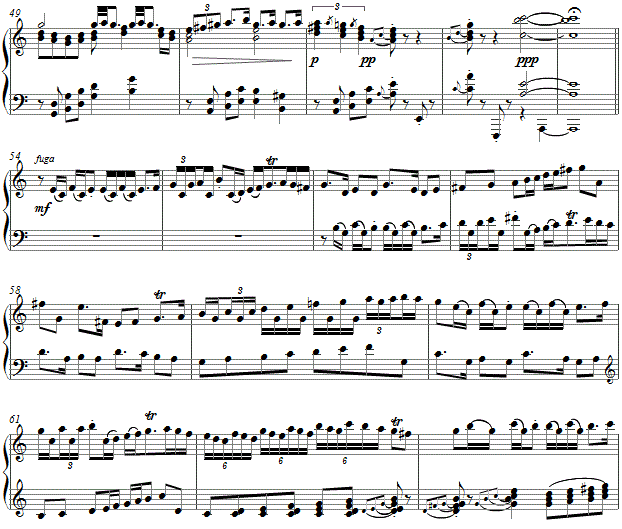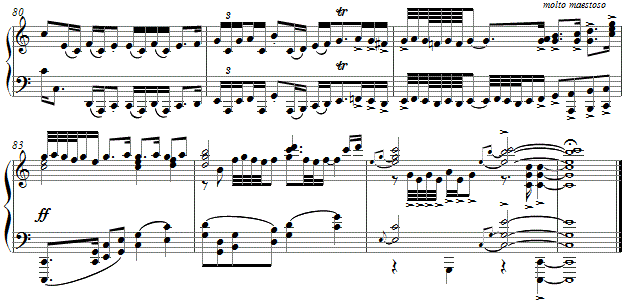Music and Texts of GARY BACHLUND
Vocal Music | Piano | Organ | Chamber Music | Orchestral | Articles and Commentary | Poems and Stories | Miscellany | FAQs
Romanesca and Fugue - (2010)
for piano
The harmonic-periodic form for the romanesca is a part of the stream of Western musical traditions. Older forms retain they utility for use as structures onto which contemporary ideas can be formed. The extensive use of turns as ornamentation is of the same order. For this romanesca, an opening gambit of ornamentation introduces the work beginning with a fortissimo and immediately shrinking back in scale to the body of the work. Like its cousin, the passamezzo, the traditional sequence of chords returns as the underlying structure.
While the romanesca ends in the minor, the fugue is set in the relative major for the most part. The normal tonic and dominant is broken in several places such that diatonic substitutes might vary the use of the theme.
The coda revisits the opening gambit and texture of the romanesca, with a nod to the gesture from the fugue within it.
The score is 4 pages, with an approximate performance time of 5' 20."
The score is available as a free PDF download, though any major commercial performance or recording of the work is prohibited without prior arrangement with the composer. Click on the graphic below for this piano score.


